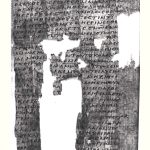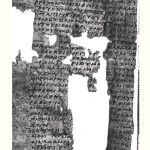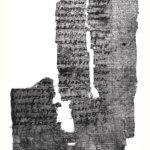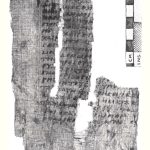| Artefact ID | 263 |
| TM ID | TM 61859 |
| Findspot (DEChriM ID) | 28 (al-Bahnasā) | Class | Textual |
| Material | Papyrus |
| Writing medium | Codex |
| Text content | Literary |
| Language | Greek |
| Description | P.Oxy. VII 1008 and 1009; Gregory-Aland P15; Gregory-Aland 𝔓15; Gregory-Aland 𝔓16; Gregory-Aland P16; NT15; NT16. Two discontinuous (but found together) leaves from a papyrus codex, both foundational witnesses of two Paulus letters. The first one, P.Oxy. VII 1008 contains First Corinthians 7:18-8:4. The handwriting is a good-sized sloping uncial; with use of diacritics, punctuation, nomina sacra. The second one, P.Oxy. VII 1009 contains Philippians 3:10-17, 4:2-8; the writing is smaller and ink brown instead of black. However, the formation of the letters is closely similar to P.Oxy. VII 1008, height and breadth of the column would be the same, and there is similar use of punctuation (blank spaces and not medial points). The original codex size can be estimated to be 18 x 26 cm (Blumell/Wayment 2015: 107). |
| Selection criteria | Literary genre (Biblical), Nomina sacra |
| Date from | 300 |
| Date to | 399 |
| Dating criteria | Palaeography. Dated to the late 4rd c. by the ed. pr. For the most recent date, see Clarysse / Orsini 2012: 469. |
| Absolute/relative date | Relative date |
| Archaeological context | The fragment was found in al-Bahnasā (Oxyrhynchos) during the excavations of Bernard Grenfell and Arthur S. Hunt. The two leaves were discovered together with a Callimachus papyrus codex (P.Oxy. VII 1011; 4th century), which also points to a date in the 4/5 c. according to the ed. pr. |
| Accession number | Alexandria, Bibliotheca Alexandrina 543 + 544. |


 Json data
Json data







